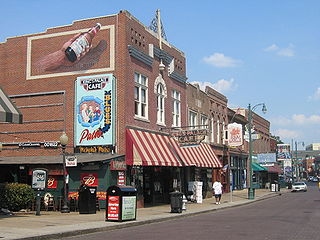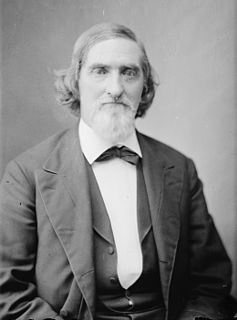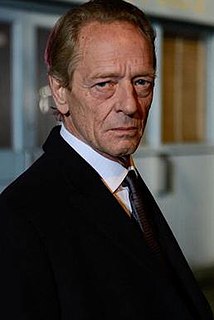Related Research Articles

In cryptography, a cipher is an algorithm for performing encryption or decryption—a series of well-defined steps that can be followed as a procedure. An alternative, less common term is encipherment. To encipher or encode is to convert information into cipher or code. In common parlance, "cipher" is synonymous with "code", as they are both a set of steps that encrypt a message; however, the concepts are distinct in cryptography, especially classical cryptography.
In information theory, an entropy coding is any lossless data compression method that attempts to approach the lower bound declared by Shannon's source coding theorem, which states that any lossless data compression method must have expected code length greater or equal to the entropy of the source.
Web colors are colors used in displaying web pages on the World Wide Web, and the methods for describing and specifying those colors. Colors may be specified as an RGB triplet or in hexadecimal format or according to their common English names in some cases. A color tool or other graphics software is often used to generate color values. In some uses, hexadecimal color codes are specified with notation using a leading number sign (#). A color is specified according to the intensity of its red, green and blue components, each represented by eight bits. Thus, there are 24 bits used to specify a web color within the sRGB gamut, and 16,777,216 colors that may be so specified.

Michael E. Brown is an American astronomer, who has been professor of planetary astronomy at the California Institute of Technology (Caltech) since 2003. His team has discovered many trans-Neptunian objects (TNOs), including the dwarf planet Eris, which was originally thought to be bigger than Pluto, triggering a debate on the definition of a planet.

Beale Street is a street in Downtown Memphis, Tennessee, which runs from the Mississippi River to East Street, a distance of approximately 1.8 miles (2.9 km). It is a significant location in the city's history, as well as in the history of blues music. Today, the blues clubs and restaurants that line Beale Street are major tourist attractions in Memphis. Festivals and outdoor concerts frequently bring large crowds to the street and its surrounding areas.

Grey Gardens is a 1975 American documentary film by Albert and David Maysles. The film depicts the everyday lives of two reclusive, upper-class women, a mother and daughter both named Edith Beale, who lived in poverty at Grey Gardens, a derelict mansion at 3 West End Road in the wealthy Georgica Pond neighborhood of East Hampton, New York. The film was screened at the 1976 Cannes Film Festival but was not entered into the main competition.
Caliente is an unincorporated community in Kern County, California. It is located 22 miles (35 km) east-southeast of Bakersfield, at an elevation of 1,312 feet (400 m).
An EPPO code, formerly known as a Bayer code, is an encoded identifier that is used by the European and Mediterranean Plant Protection Organization (EPPO), in a system designed to uniquely identify organisms – namely plants, pests and pathogens – that are important to agriculture and crop protection. EPPO codes are a core component of a database of names, both scientific and vernacular. Although originally started by the Bayer Corporation, the official list of codes is now maintained by EPPO.

The Beales and the Fowlers are a fictional family in the BBC soap opera EastEnders. They were the main family for storylines in early episodes of EastEnders, and remained as such ever since. With at least one member of the family having been a member of the cast from the first episode in February 1985, they are the show's longest serving family. The original Beale/Fowler family consisted of matriarch Lou Beale and her children Pete and Pauline, alongside their families including their children Ian, Mark, Michelle and their spouses Kathy Hills and Arthur Fowler. Additionally, several members of the family have been introduced at a later point, including Pauline and Arthur's son Martin who was the first baby to be born into the show in 1985. The family has been headed with a matriarch first seen with Lou, and over the years, Lou's daughter Pauline, Ian's wife Jane Collins and more recently Pete's wife Kathy, have filled this role.

Penacook, originally called "Fisherville", is a village within the city of Concord in Merrimack County, New Hampshire, United States. It lies along Concord's northern border with Boscawen. The name comes from the Pennacook tribe that lived in the area. "Penacook" (Pennycook) was the original name of the plantation incorporated by present-day Concord.

If Beale Street Could Talk is a 1974 novel by American writer James Baldwin. His fifth novel, it is a love story set in Harlem in the early 1970s. The title is a reference to the 1916 W.C. Handy blues song "Beale Street Blues", named after Beale Street in Downtown Memphis, Tennessee.
William Archibald Dunning was an American historian and political scientist at Columbia University noted for his work on the Reconstruction era of the United States. He founded the informal Dunning School of interpreting the Reconstruction era through his own writings and the Ph.D. dissertations of his numerous students. Dunning has been criticized for advocating white supremacist interpretations, his "blatant use of the discipline of history for reactionary ends" and for offering "scholarly legitimacy to the disenfranchisement of southern blacks and to the Jim Crow system."

Richard Lee Turberville Beale was a slave owner, lawyer, three-term United States Congressman from the Commonwealth of Virginia, and a brigadier general in the Confederate States Army during the American Civil War.
In discrete optimization, a special ordered set (SOS) is an ordered set of variables, used as an additional way to specify integrality conditions in an optimization model. Special order sets are basically a device or tool used in branch and bound methods for branching on sets of variables, rather than individual variables, as in ordinary mixed integer programming. Knowing that a variable is part of a set and that it is ordered gives the branch and bound algorithm a more intelligent way to face the optimization problem, helping to speed up the search procedure. The members of a special ordered set individually may be continuous or discrete variables in any combination. However, even when all the members are themselves continuous, a model containing one or more special ordered sets becomes a discrete optimization problem requiring a mixed integer optimizer for its solution.

Edith Ewing Bouvier Beale was an American socialite and singer known for her reclusive and eccentric lifestyle. Known as Big Edie, she was a sister of John Vernou Bouvier III and an aunt of Jacqueline Kennedy Onassis. Her life and relationship with her daughter Edith Bouvier Beale was highlighted in the 1975 documentary Grey Gardens.

Sacalia is a genus of turtles in the family Geoemydidae. The genus was erected by John Edward Gray in 1870. The Sacalia is native to Southereastern China, Laos, and Vietnam. It was declared an endangered species of turtle by the IUCN Red List due to its illegal trade. The sacalia has a carapace of dark-brown color that permits it to camouflage to its habitat. They are believed to select the area of a river that better matches their color.

Bealville is an unincorporated community in Kern County, California. It is located on the Union Pacific Railroad 1.25 miles (2 km) south of Caliente, at an elevation of 1,811 feet (552 m). The area was named after Edward Fitzgerald Beale, who owned the adjacent Rancho El Tejon.

Calvin Lunsford Beale was an American demographer who specialized in rural population trends. He first identified a reverse in population decline in some rural areas, and his work led to development of the Beale code for categorizing rural development.

James Willmott-Brown is a fictional character from the BBC soap opera EastEnders, played by William Boyde. The character originally appeared in Albert Square from 1986 to 1989, wherein he established the square's second pub – "The Dagmar" – and instigated a feud with his business rival Den Watts. Willmott-Brown then developed a romantic obsession with his employee Kathy Beale, which sparked the events of the character raping her in 1988.
References
- ↑ David L. Brown, Fred K. Hines, and John M. Zimmer, Social and Economic Characteristics of the Population in Metro and Nonmetro Counties: 1970.